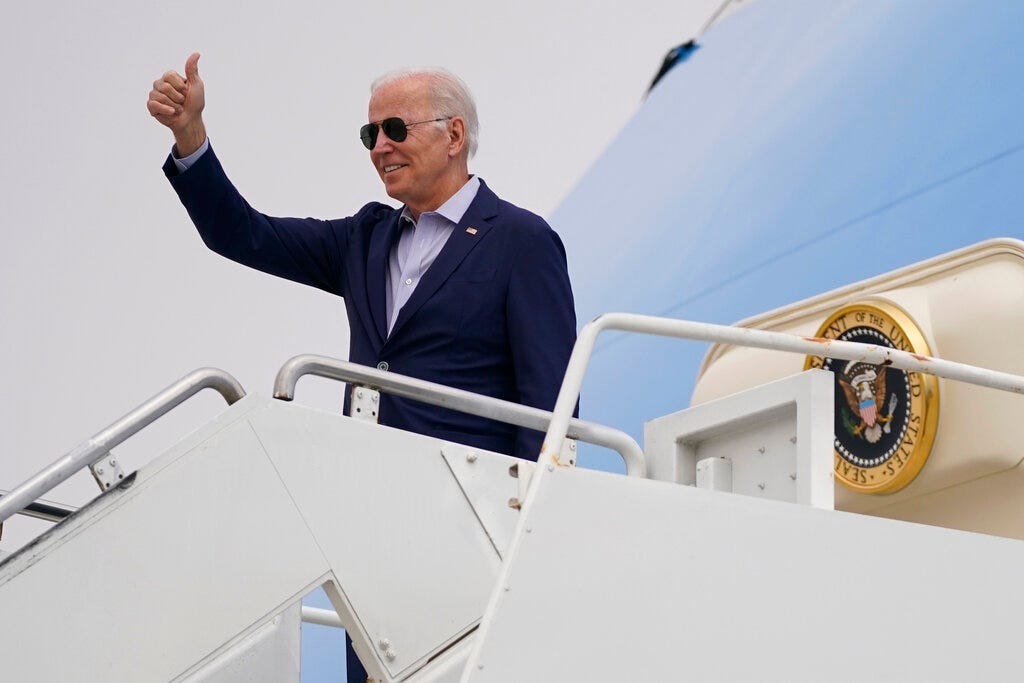- The White House announced six measures to combat rising energy prices as the US endures another heat wave.
- They're all focused on connecting lower-income households with cheaper clean energy.
- Because of the rising price of natural gas, utility prices are spiking this year.
The White House has some good for those with air conditioners blasting this summer as the weather gets increasingly hot. President Biden is betting his administration can help by lowering electricity costs while investing in environmentally friendly infrastructure.
For many, keeping cool is already cost-prohibitive, in a time when other expenses are also surging in price.
In May, Barclays projected that US households could see a 30% to 40% hike in monthly energy bills in 2022 if natural gas prices remain high.
Residents in Fort Piece, Florida, for example, said their power bills shot up this summer. Many reported that the Fort Pierce Utilities Authority charged them double their usual cost, according to NBC's Meghan McRoberts. One resident said that his power bill went up to nearly $2,000 in June.
The Biden administration announced on Wednesday that it would be implementing six new measures to temper the price of electricity, and make clean energy homes more widespread and affordable overall.
"As extreme heat continues to affect tens of millions of Americans, hitting low-income families harder than others, President Biden is implementing new programs to help maintain a consistent and affordable energy supply to cool their homes," the White House said in a statement.
Detailed below are the six measures the White House is installing.
Helping families in low-income rental housing pay for solar power
According to the White House, for the first time, families in rental housing partially subsidized by the Department of Housing and Urban Development (HUD) will be able to connect to local community solar power, where available.
It estimates that 4.5 million families will benefit, and can save 10% per year on their electric bills as a result.
Low-income families in five states can get access to solar power
Households participating in the Low-Income Home Energy Assistance Program (LIHEAP) will also connect with local solar power wherever available, in five pilot states, as well as Washington, D.C: Colorado, Illinois, New Jersey, New Mexico, and New York.
The Department of Energy (DOE) estimates that households in these six locations will see over $1 billion in combined electric bill savings per year.
Small rural housing authorities will make energy efficiency upgrades
HUD is launching a program to help small rural housing authorities make energy efficiency upgrades intended to help those authorities save money. The authorities will then use those savings to invest in improvements at HUD-supported rental housing.
Hundreds of thousands of solar jobs over the next decade
The DOE will announce that $10 million in funding will be available to support new jobs in the solar industry, intended to pull talent from underrepresented groups. The funding will be pulled from the Bipartisan Infrastructure Law's Advancing Equity through Workforce Partnerships program.
Award programs for solar-powered communities
The White House announced the "Sunny Awards for Equitable Community Solar," $100,000 in prizes for 55 projects and programs working to increase community access to solar power.
More affordable housing supply
Over the next 90 days, HUD will meet with stakeholders to "highlight federal funding sources," for the purpose of supporting public facilities and increasing their energy-efficient, affordable housing supply.
